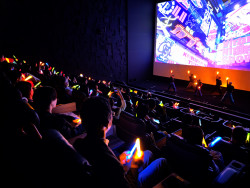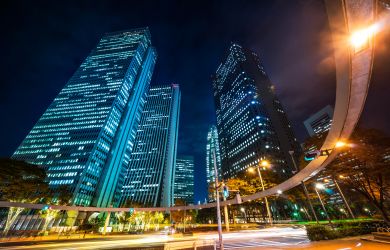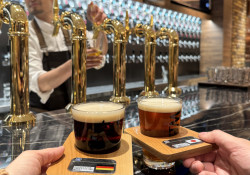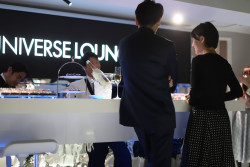
April 14, 2012
Ryoichi Kurokawa
SonarSound’s most intriguing act isn’t strictly musical
By Metropolis
Originally published on metropolis.co.jp on April 2012

SonarSound—the Barcelona-based electronic music festival—first touched down in Tokyo in 2004. Since then it’s been a sporadic affair. But last year’s event, held just three weeks after 3/11, was cathartic.
SonarSound 2011 was the first big music fest to be held after the disaster. When headliners Battles took the stage there was almost a collective sigh of relief that, yes, life (and the entertainment calendar) could resume some sense of normalcy.
This year’s Sonar doesn’t look to require the same kind of therapeutic effect. But with venerable dance music names like Squarepusher and Ken Ishii on the bill alongside a bevy of newcomers, SonarSound Tokyo 2012 should provide some memorable moments—both of the booty-shaking and chin-stroking variety.
As with last year, this year’s Sonar looks beyond the purely musical to the audiovisual.
Based in Germany, Ryoichi Kurokawa creates immersive “audiovisual sculptures” that turn the usual electronic music MO on its face: instead of having the music guide the visuals, Kurokawa conceives his shape-shifting electronic light paintings simultaneously with a palette of unearthly sounds.
“I started creating just for fun to share it with my friends,” Kurokawa tells Metropolis modestly from Berlin. “I had no education in any kind of art, but I found myself working in this world.”
The muse for Kurokawa’s synesthetic, multi-screen creations lies not in art history or pop music, but in the environment around him. “Nature and its structures, forms and textures provide most of my inspiration,” he explains.
In the last decade, the self-taught producer’s works have been shown at major venues from the UK’s Tate Modern to the Venice Biennale, while in Japan he’s provided visuals for Ryuichi Sakamoto.
Yet Kurokawa’s multi-screen creations are not meant just for museum walls, but also for pop culture milieus like music festivals. “I’m always trying to provide my audience with delights and surprises,” the 34-year-old says.
How does Kurokawa approach an event like Sonar compared to an exhibition? “I put more emphasis on the musical component for these kind of festivals,” he says, “in comparison to a museum which enables me to construct an immersive space.”
Kurokawa joins a growing number of expat Japanese artists and musicians making their home in Berlin.
“Since European countries share boundaries over land with other countries, they share their arts scenes more naturally,” he answers when asked about his decision to leave Japan. “The European scene is much bigger than Japan’s, and this means new art scenes are easily born and young artists can be more widely active here.”







